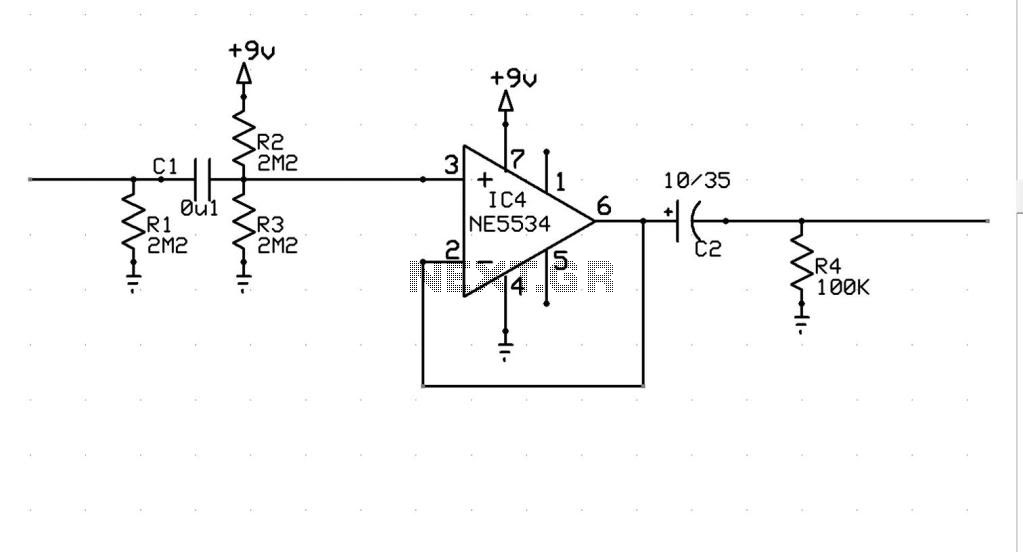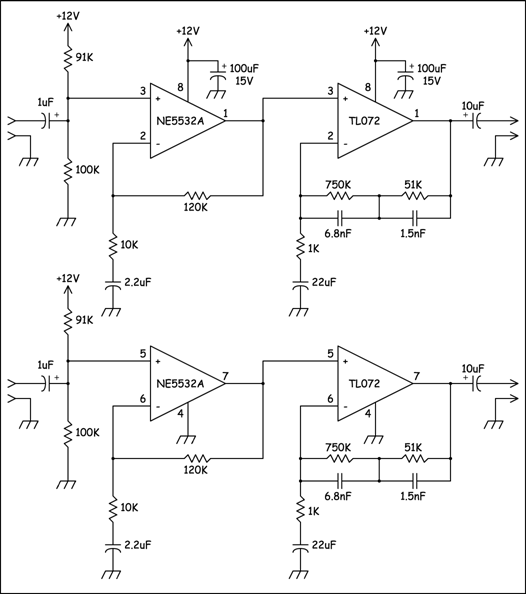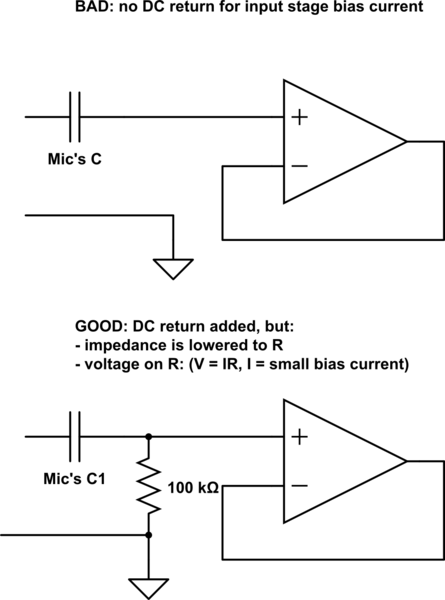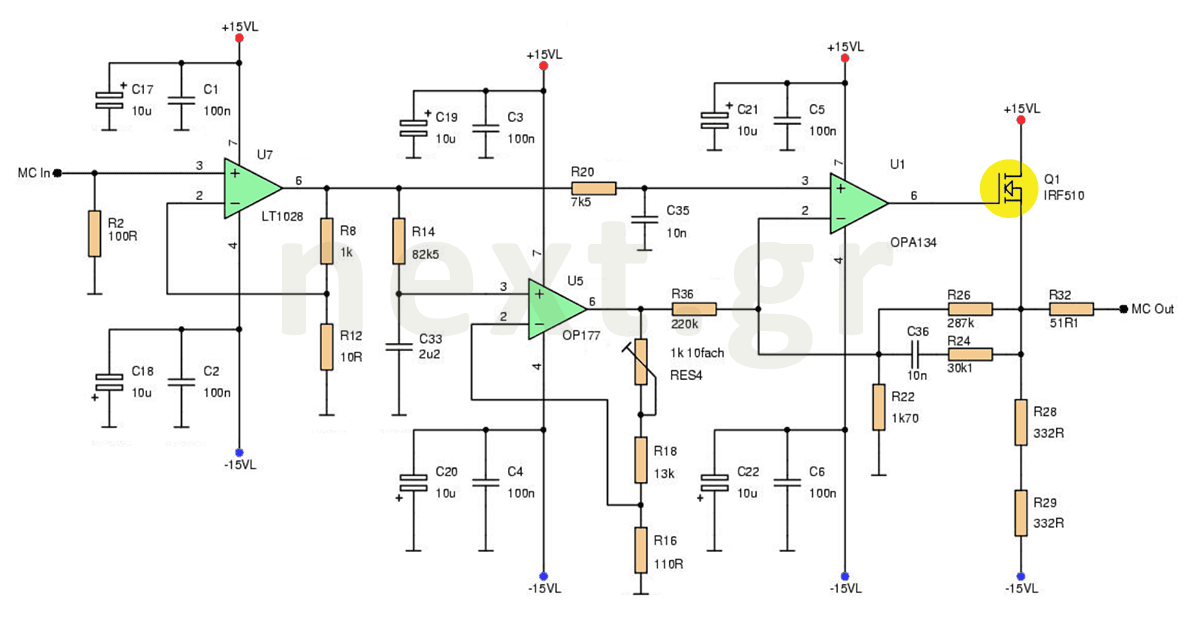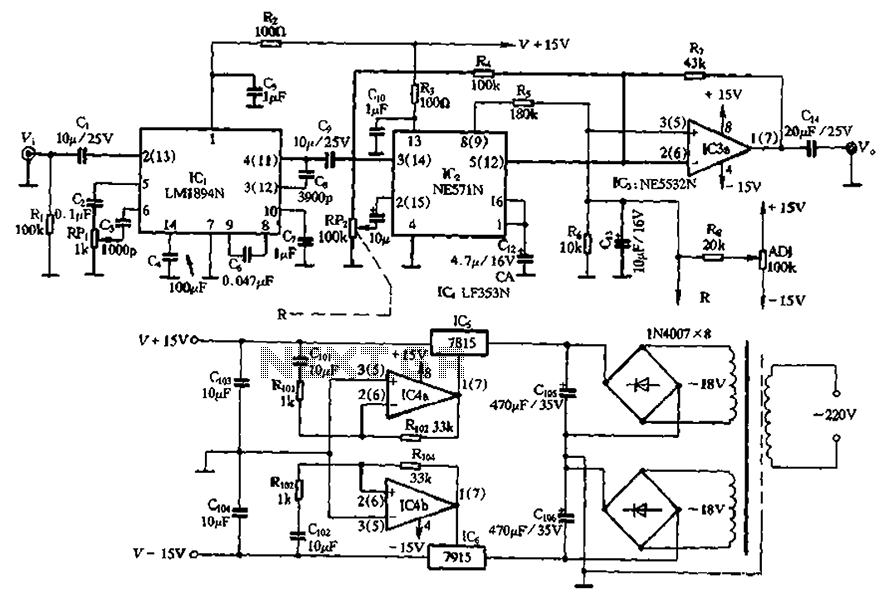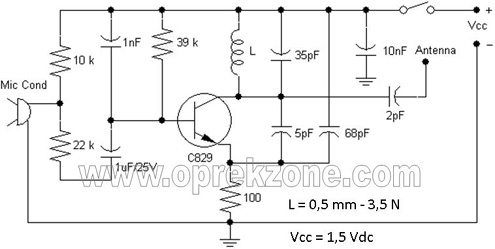
Dynamic Microphone Preamp
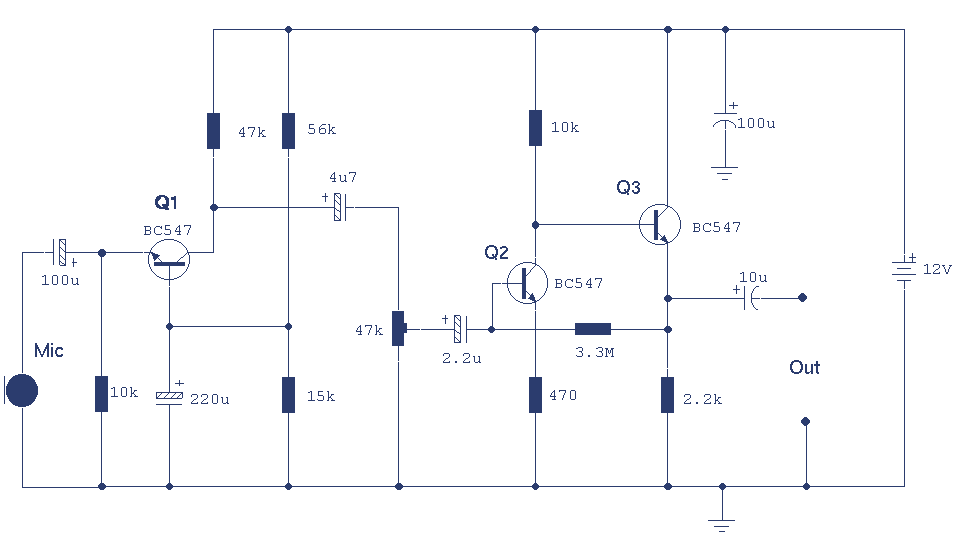
The provided description pertains to a low noise pre-amplifier that is suitable for amplifying dynamic microphones with an output impedance ranging from 200 to 600 ohms. This pre-amplifier is a 3-stage discrete amplifier with gain control. It allows for the use of alternative transistors such as BC109C, BC548, BC549, BC549C, with minimal impact on the overall performance.
The first stage of this pre-amplifier is built around Q1 and operates in a common base configuration. While this configuration is generally not used in audio stages, in this particular case, it enables Q1 to operate at low noise levels and enhances the overall signal-to-noise ratio.
The second and third stages of the pre-amplifier, Q2 and Q3 respectively, form a direct coupled amplifier. This design is similar to an earlier version of a microphone preamplifier. The direct coupling between Q2 and Q3 allows for efficient signal transfer and reduces phase shift, thus maintaining the integrity of the amplified signal.
To ensure optimal performance, it is essential to use high-quality components and maintain proper biasing for the transistors. The gain control feature allows for the adjustment of the output level, making this amplifier versatile and appropriate for a wide range of applications.
In conclusion, this low noise pre-amplifier, with its 3-stage discrete design, gain control, and the use of alternative transistors, presents a robust and efficient solution for amplifying dynamic microphones with an output impedance of 200 to 600 ohms. Its unique design elements, such as the common base configuration at the first stage and the direct coupled amplifier at the second and third stages, contribute to its low noise levels and high signal-to-noise ratio.A low noise pre-amplifier suitable for amplifying dynamic microphones with 200 to 600 ohm output impedance. This is a 3 stage discrete amplifier with gain control. Alternative transistors such as BC109C, BC548, BC549, BC549C may be used with little change in performance.
The first stage built around Q1 operates in common base configuration. This is unusuable in audio stages, but in this case, it allows Q1 to operate at low noise levels and improves overall signal to noise ratio. Q2 and Q3 form a direct coupled amplifier, similar to my earlier mic preamp. 🔗 External reference
The first stage of this pre-amplifier is built around Q1 and operates in a common base configuration. While this configuration is generally not used in audio stages, in this particular case, it enables Q1 to operate at low noise levels and enhances the overall signal-to-noise ratio.
The second and third stages of the pre-amplifier, Q2 and Q3 respectively, form a direct coupled amplifier. This design is similar to an earlier version of a microphone preamplifier. The direct coupling between Q2 and Q3 allows for efficient signal transfer and reduces phase shift, thus maintaining the integrity of the amplified signal.
To ensure optimal performance, it is essential to use high-quality components and maintain proper biasing for the transistors. The gain control feature allows for the adjustment of the output level, making this amplifier versatile and appropriate for a wide range of applications.
In conclusion, this low noise pre-amplifier, with its 3-stage discrete design, gain control, and the use of alternative transistors, presents a robust and efficient solution for amplifying dynamic microphones with an output impedance of 200 to 600 ohms. Its unique design elements, such as the common base configuration at the first stage and the direct coupled amplifier at the second and third stages, contribute to its low noise levels and high signal-to-noise ratio.A low noise pre-amplifier suitable for amplifying dynamic microphones with 200 to 600 ohm output impedance. This is a 3 stage discrete amplifier with gain control. Alternative transistors such as BC109C, BC548, BC549, BC549C may be used with little change in performance.
The first stage built around Q1 operates in common base configuration. This is unusuable in audio stages, but in this case, it allows Q1 to operate at low noise levels and improves overall signal to noise ratio. Q2 and Q3 form a direct coupled amplifier, similar to my earlier mic preamp. 🔗 External reference
